In the Middle Ages, a theory developed according to which the king and the state are not one and the same, that is, the state is independent of the person of the king. Names such as the estates of the crown or, in the case of Hungary, countries of the Holy Crown also come from here. In addition to the fact that the Holy Crown attributed to Saint Stephen became the embodiment of Hungarian statehood; by the 13th century, the tradition had already developed, according to which only the one who was crowned with the Holy Crown by the Archbishop of Esztergom in Székesfehérvár could be the legitimate Hungarian king. Knowing this, it is not surprising that already during the Middle Ages, it was really important to keep the crown as safe as possible.
The Holy Crown was first kept in the obvious way in the Cathedral of the Virgin Mary in Székesfehérvár, under the supervision of the guardian canons of Fehérvár. During the reign of King Mátyás, the law was passed that designated the Visegrád citadel as the place for guarding the crown, and the guarding was the responsibility of two crown guards elected by the estates. After the Mohács disaster, the Holy Crown was with King János Szapolyai, King Ferdinand Habsburg and Sultan Suleiman. Finally, in the middle of the 16th century, it finally came into the possession of King Ferdinand, who kept the crown of St. Stephen in Pozsony [Bratislava], because Hungarian rulers were crowned here until 1835 due to the Turkish occupation of Székesfehérvár.
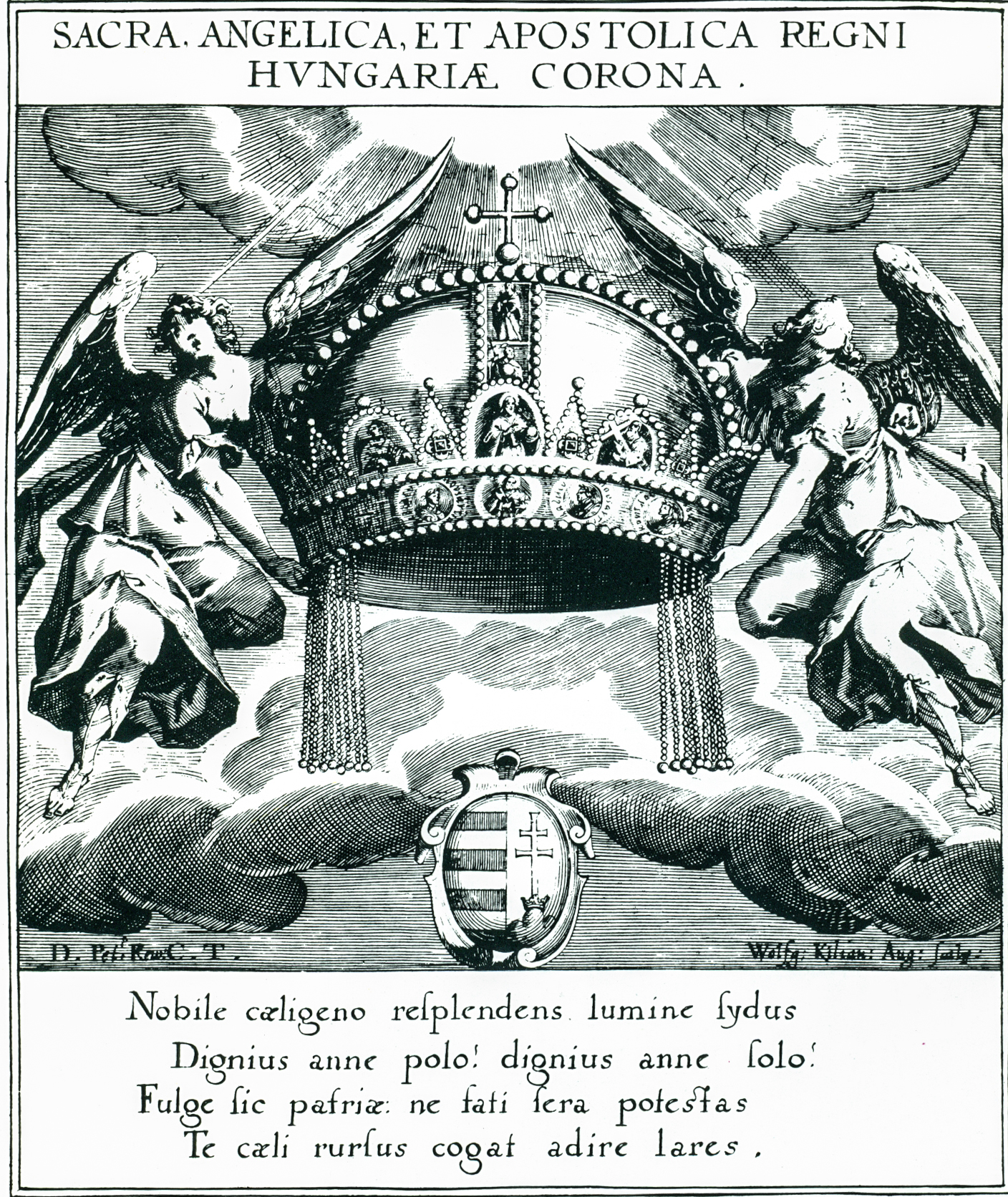
The Hungarian Holy Crown on an engraving from Augsburg from 1613 (Source: Wikimedia Commons)
The year 1608 is worth highlighting in the history of the preservation of the Holy Crown. Because among the laws created after the coronation of Matthias II, one of the articles specifically details the protection of the crown. Pursuant to this, the coronation jewels had to be kept in the Öreg-torony [Old Tower] of the Pozsony [Bratislava] Castle in a room specially designed for this purpose, and two lords of the crown guard were responsible for the safekeeping, of whom from the middle of the 17th century, one had to be Catholic and the other Protestant. Furthermore, the law stipulated that, in addition to the castle garrison in Pozsony [Bratislava], a 60-person military unit under the command of the lords of the crown guard must be set up to guard the crown. So already at the very beginning of the 17th century, the first corps of the Crown Guards was established, which during the course of the century expanded into a 50-person Hungarian and a 50-person German squadron. However, the articles of law created later allow us to conclude that the chief guards of the crown performed their duties negligently, since it is a recurring problem that the crown guards were not with the Holy Crown.
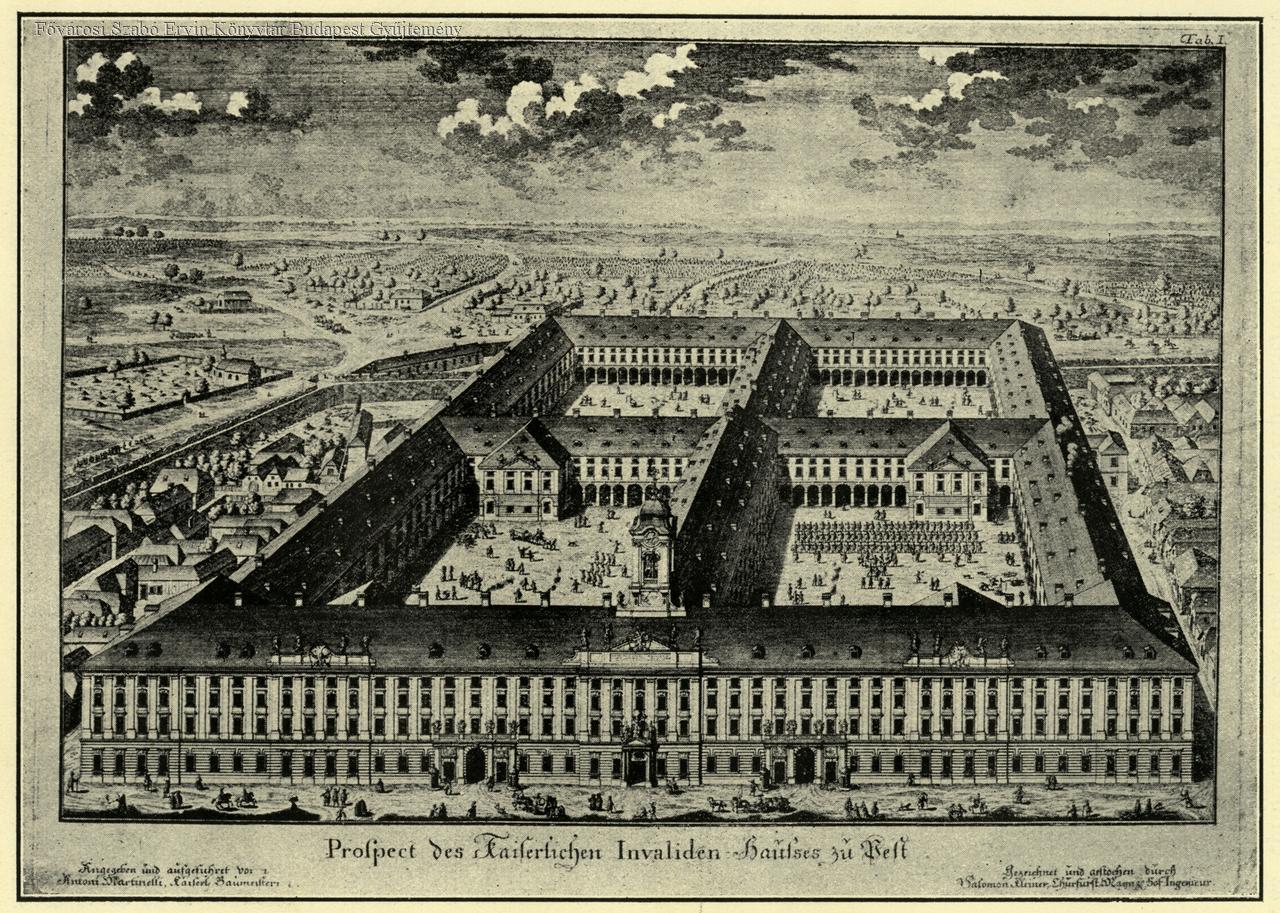
The staff of the Royal Hungarian Crown Guard was recruited from the residents of the Invalidus Palace in Pest (today the Lord Mayor's Office is located there). In Kleiner's 1739 copperplate, we can see what the building would have looked like if the northern part was also built (Source: FSZEK/Budapest Collection)
The issue of guarding the Holy Crown came up again in the middle of the 18th century. Because in 1751, Mária Terézia transformed the existing guarding system: she merged the two squadrons, whose staff consisted of 24 Hungarian and 19 German soldiers. The body was named the Royal Hungarian Crown Guard, and its members were recruited from the Invalidus Palace in Pest (it was the home of veteran soldiers at that time, today it is known as the central town hall). As a result, the Crown Guard began to be integrated into the regular army. After the death of Maria Theresa, her son, Joseph II came to the throne, who in 1784 took the crown from Pozsony [Bratislava] to the imperial and court treasury in Vienna, and dissolved the Crown Guard in the spirit of the Enlightenment. The Holy Crown was brought home from the imperial city only after the death of Joseph II, in 1790, but at that time the castle in Pozsony [Bratislava] was no longer designated as the place of custody, but the royal palace in Buda. At the same time, they did not create a new one, but - as Kálmán Melichár writes in his work prepared for the millennium celebration series - a grenadier squadron fulfilled the duties of the Crown Guard. The guarding of the Holy Crown was suspended in 1849, but from 1861 a grenadier squadron guarded the crown again.
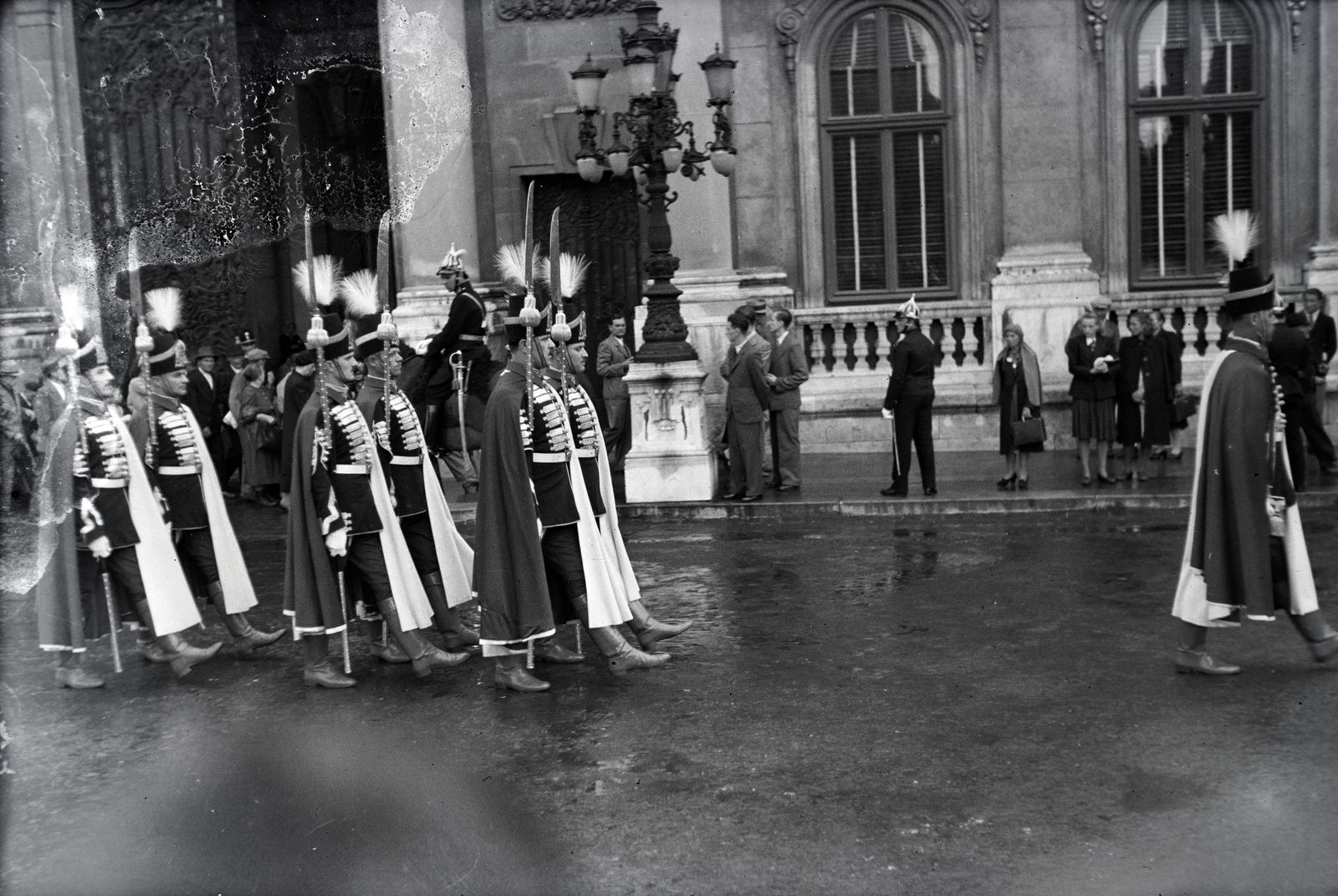
The members of the Hungarian Royal Crown Guard not only guarded the Holy Crown, but also provided escort on special occasions (for example, the St. Stephen's Day procession). The photo was taken on 20 August 1940. (Source: Fortepan/ No.: 146255)
After the Compromise of 1867, the issue of guarding the Holy Crown was soon settled in a dignified manner: on 27 May 1871, the supreme decision was published, with which Joseph Franz ordered the (re)establishment of the Hungarian Royal Crown Guard. The members of the Crown Guard, established one hundred and fifty years ago on 1 January 1872, were recruited from the National Guard and belonged to the Ministry of National Defence. As can be read in Kornél Bakay's article in 6th issue of História of 1982, the Crown Guard consisted of 24 people, not including the 2 civilian employees and the 5 messengers. It is interesting that the members of the Hungarian Royal Crown Guard were only deputy officers, headed by the commander of the Crown Guard.
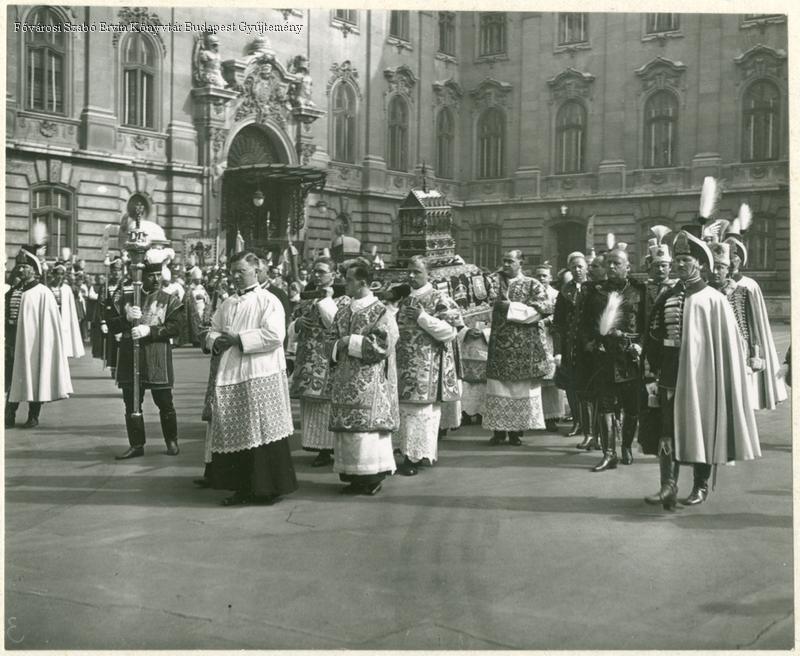
Members of the Hungarian Royal Crown Guard accompanied the Holy Right in the St. Stephen's Day processions. The photo was taken in 1941 in the courtyard of the Buda Castle (Source: FSZEK Budapest Collection)
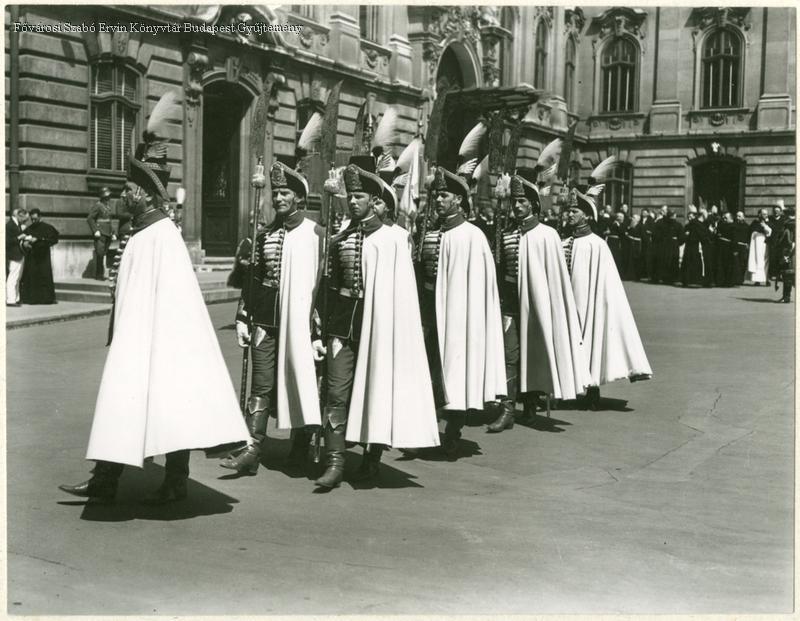
The parade of members of the Hungarian Royal Crown Guard in the courtyard of the Buda Castle in 1941. Their uniforms were in national colours (Source: FSZEK Budapest Collection)
Around the turn of the century, the elite character of the Crown Guard was confirmed, as the rank of crew was the same as that of a sergeant in the army. In addition to these, their uniforms were regularized: the raised cap was embellished with egret feathers and a coat of arms, the ornate attila [a traditional Hungarian short coat] was red, the trousers were green, while the cloak was white, giving the national tricolour. Their weapon was the decorative sword, and the so-called vybard, which was a type of halberd. During the Hauszmann reconstruction, an armoury was created in the royal palace in Buda, where the Holy Crown and other coronation jewels were kept (the public could only see the exhibited national relic on special occasions). Since the crown had to be guarded in the palace, the crown guard's barracks were built in Váralja Street below the palace, where today there is a paved sports field.
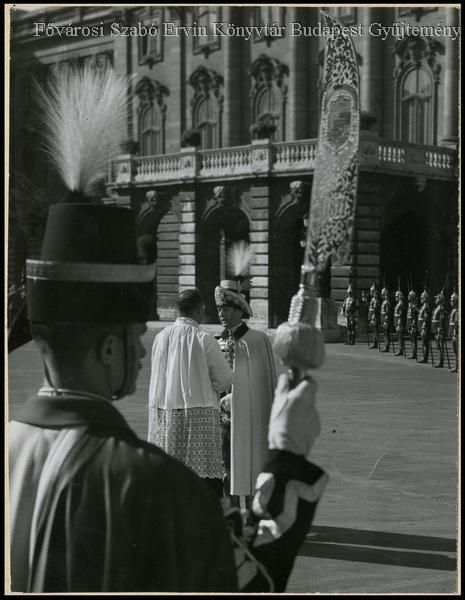
The typical weapon of the crown guards was the so-called vybard, which was a type of decorative halberd. The photograph was taken on 20 August 1938, in the background is the Krisztinaváros wing of the Buda Castle (Source: FSZEK Budapest Collection)
In the turbulent times following the First World War, the fate of not only the Crown Guard, but also the Holy Crown became uncertain. The Hungarian Royal Crown Guard was disbanded (its members had to guard the villa of Mihály Károlyi). During the Soviet Republic, pamphlets were circulated that demanded the destruction of the Holy Crown (this is not new, as Mihály Táncsics demanded the same thing in 1848). But with the victory of the counter-revolutionary forces, the order before 1918 was restored. Furthermore, in 1928, a modern law was passed, which described in detail the duties of the Hungarian Royal Crown Guard and the custody of the coronation jewels.
Among other things, it was prescribed by Act XXV of 1928 that "In addition to the cases mentioned in the second paragraph of § 8, the Holy Crown and the related precious stones may be removed from their place of custody and storage only with the knowledge and consent of the Prime Minister and the crown guards of the country, as well as with the cooperation of at least one crown guard, for the duration of the carefully considered legal or justified need to take it out, as follows: 1. in order to lawfully fulfill the purpose of the Holy Crown and the associated precious stones for the coronation ceremony legally set by the Parliament and for its preparatory actions; 2. for the purpose of ensuring the safety and integrity of the Holy Crown and the associated precious stones, ensuring their unimpaired preservation, and preventing their perishability; 3. for the purpose of legal, legally customary official and other justified inspections, as well as - if the Parliament agrees to this - for national ceremonies and celebrations; 4. for the purpose of promoting scientific research."
During the Second World War, in 1942, it was transferred from the palace's armoury to a booth in the governor's shelter 60 meters deep, where it was guarded 24 hours a day by 2 crown guards. On 15 October 1944, after Miklós Horthy's military order on Hungary's withdrawal from the war was read on the radio, the occupying Germans went to the Buda Castle, where the anti-German crown guards and bodyguards engaged in a firefight with the incoming SS unit. After the Arrow Cross takeover, the Crown Guard were first sent with the coronation insignia to Veszprém, then to Kőszeg and its surroundings from the approaching front, from where they finally evacuated the Holy Crown to the West, which was seized by the Americans.
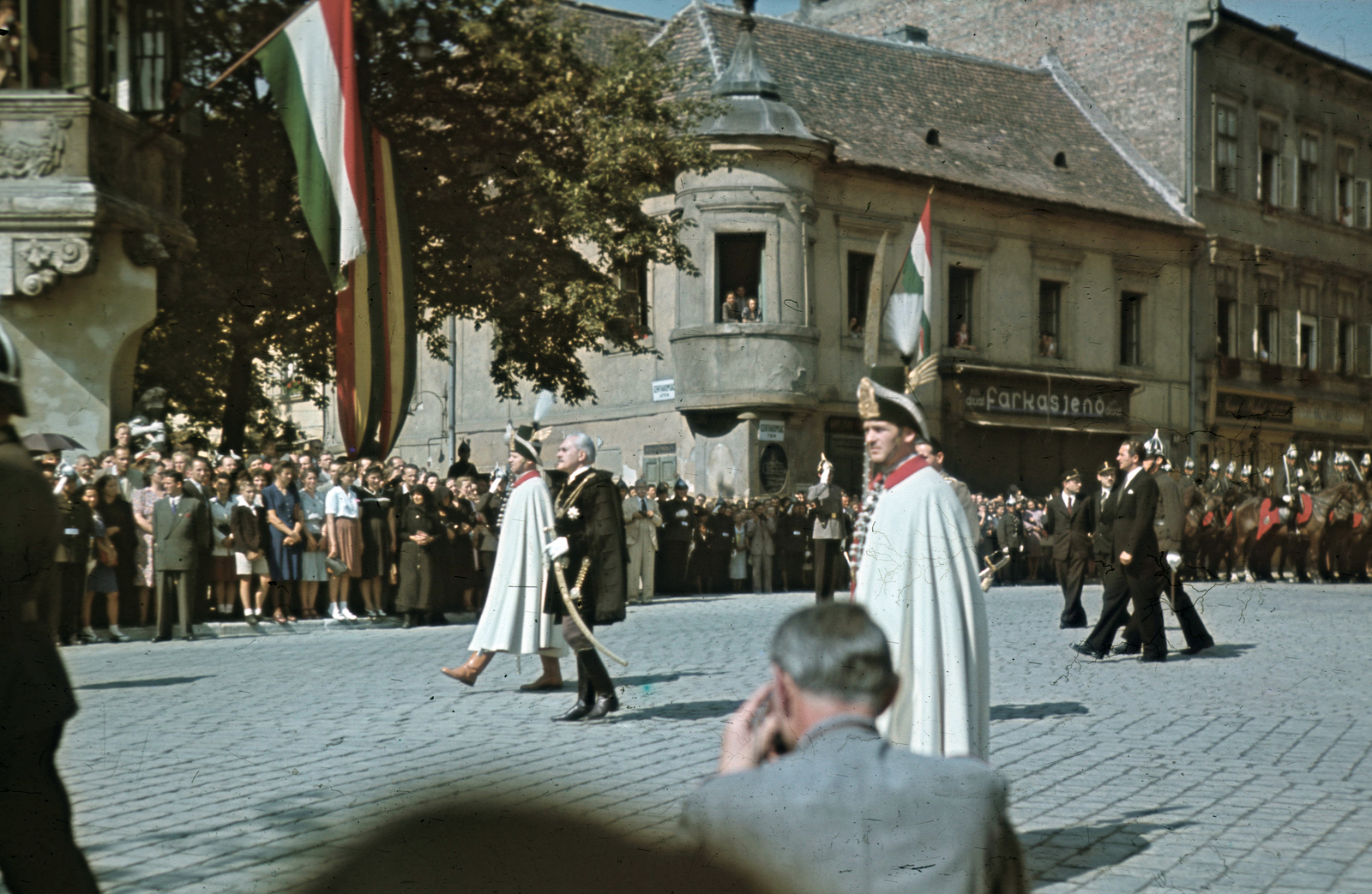
Prime Minister Miklós Kállay accompanied by members of the Hungarian Royal Guard in Szentháromság Square in 1943 (Source: Fortepan/No.: 20821)
Since the Holy Crown came into the possession of the Americans in 1945, the Hungarian Royal Crown Guard was also abolished. The national relic did not return home until 1978, when it was exhibited in the National Museum together with the other coronation badges as simple historical artefacts. Although József Vitéz, a former member of the Hungarian Royal Crown Guard, initiated the re-establishment of the Crown Guard in 1990, he was only able to establish the Association of the Hungarian Crown Guards as a non-governmental organization due to the negative response from higher-ups. In 2000, the coronation jewels were transferred from the National Museum to the dome hall of the Parliament, where they were guarded by the Republic Guard Regiment. Finally, in 2011, it was decided to once again set up a crown guard unit belonging to the units of the national army: the Honvéd Crown Guard. The Honvéd Crown Guard keeps the Holy Crown, which embodies Hungarian statehood, and the other coronation insignia in the dome hall of the Parliament to this day.
Cover photo: Public display of the Holy Crown and the coronation jewels in the marble hall of the Buda Castle in 1938. In the background are members of the Hungarian Royal Crown Guard, and crown guards Baron Zsigmond Perényi is sitting on the left, and Count Tibor Teleki on the right (Source: FSZEK Budapest Collection)

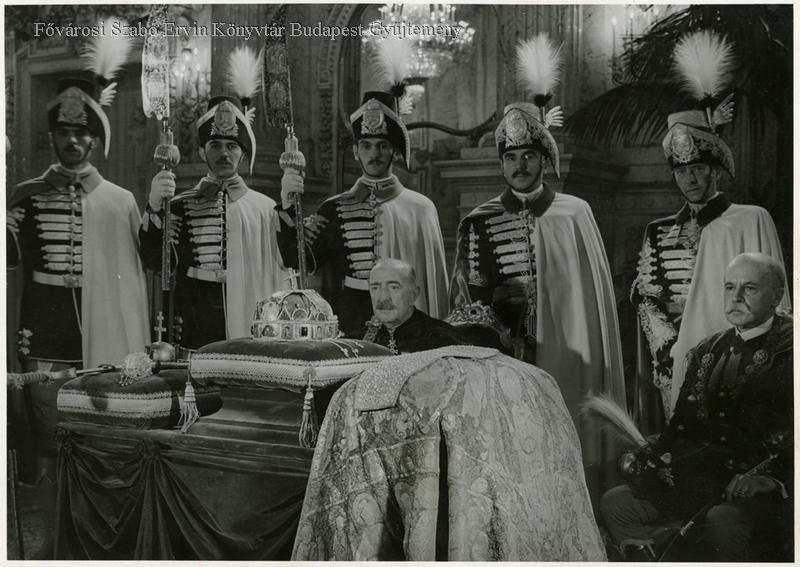
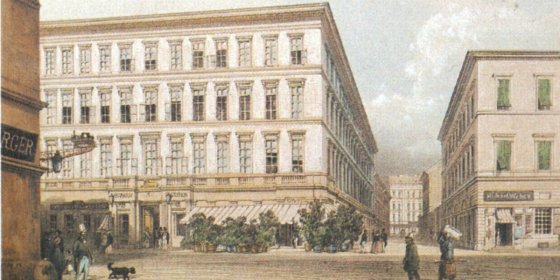

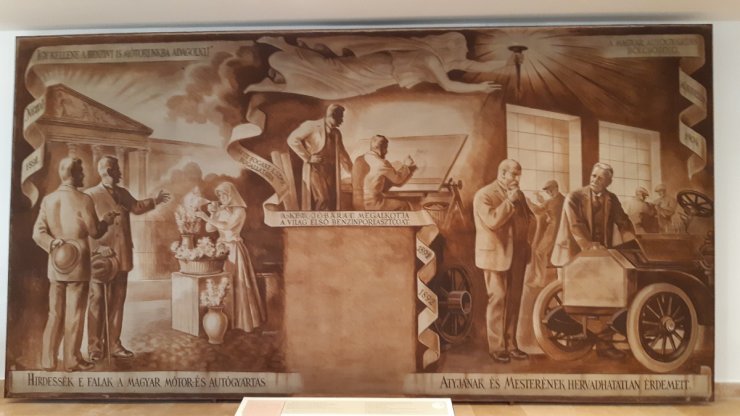

































Hozzászólások
Log in or register to comment!
Login Registration